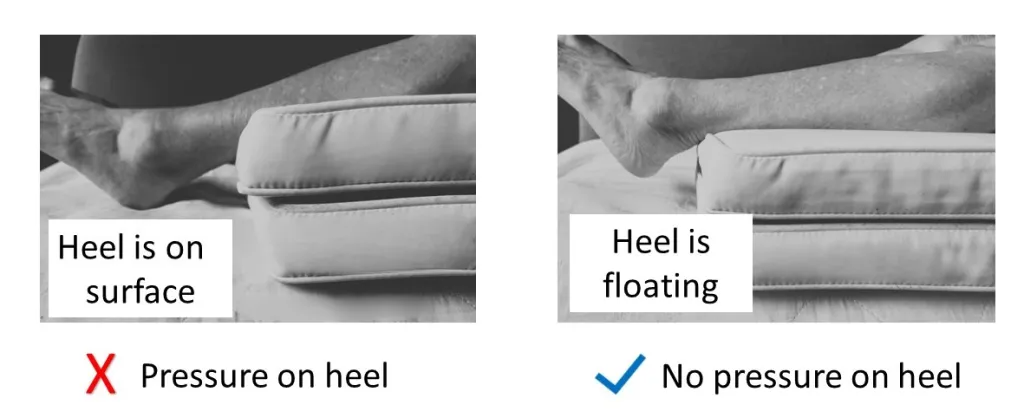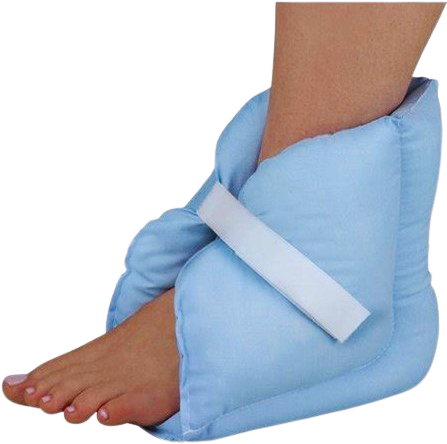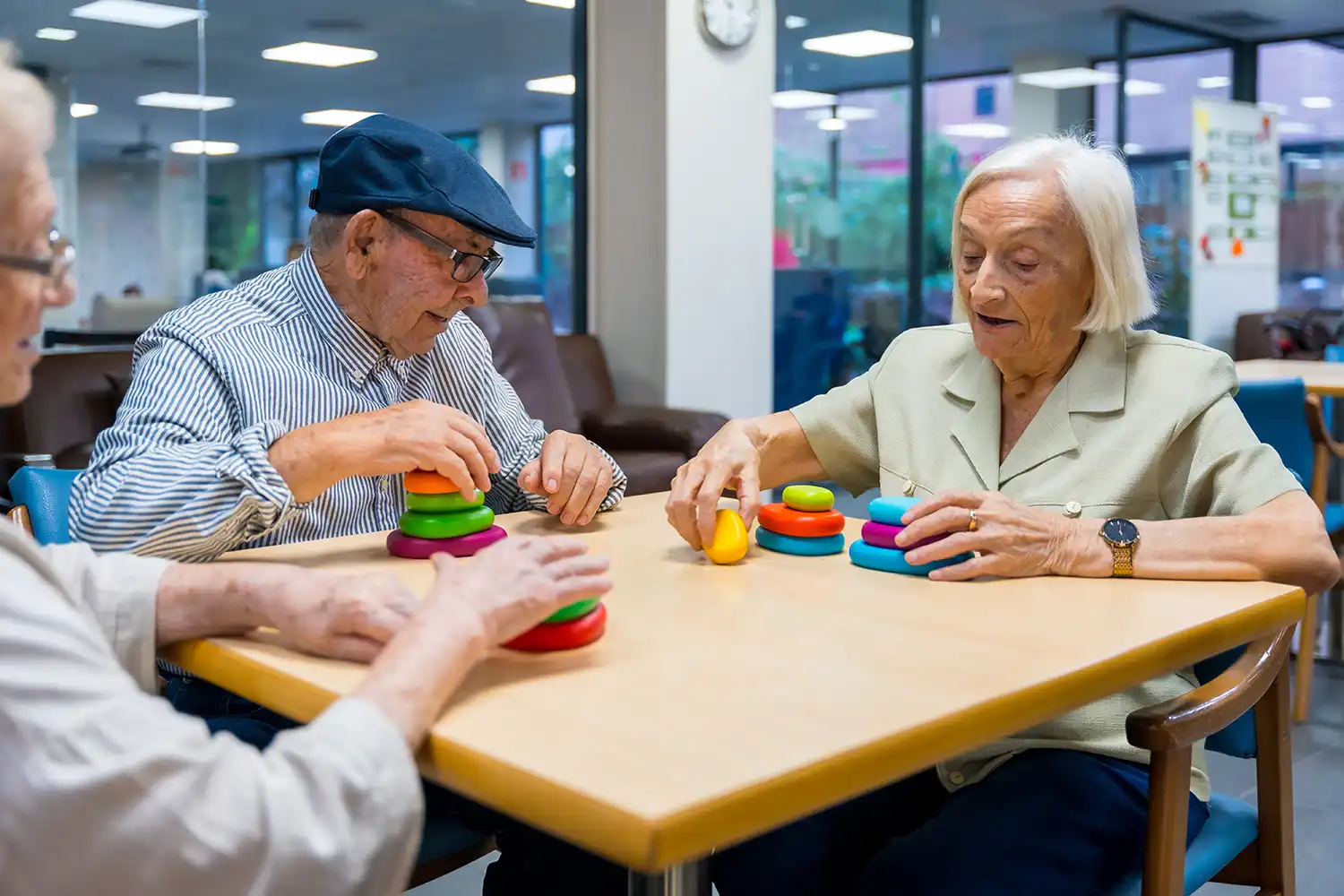My good friend, Judy, is an excellent nurse. She had an important comment: “Caregivers are too busy to read long articles. Keep it short. Just make important points to remember.” Her comment about pressure sores was to stress taking a quick look every day. “Check the tailbone, buttocks and heels!”
On that note, I’ll briefly make some pointers about the heels.
Thirty percent of serious pressure sores are on the heels. These ulcers occur among people who cannot move their feet. This could be due to a stroke, leg injury or inability to walk. These sores can get worse rapidly due to constant pressure from the heel bone.
Prevent heel ulcers in high-risk patients using these pointers:
1. Wear socks.
Socks cushion and pad the heel while also decreasing friction against the skin. In addition, they keep the feet dry and warm. One trick is to use a double layer of socks. This decreases friction even more.
2. Use pillows to avoid constant pressure on the heels.
Pillows can be used to keep the heel elevated. This is especially important at the first sign of injury. Place the pillow length-wise under the calf. Completely elevate the heel off the supporting surface.

Image Credit: Geriatrics with Aloha
But don’t put a pillow under the knees. Do you see the photo at the top of this post? It’s common to put pillows under the knees to add comfort. But this bends the knees and results in added pressure on the heels. There is also a shearing force as the heels push downward.
3. Heel protectors help.

Image Credit: Geriatrics with Aloha
Heel protector booties, splints, and sheepskin can all be used to protect heels. Make sure that the cushioning is effective with no pressure points.
Reference: Posted in Geriatrics with Aloha (2024), Available at: https://geriatricswithaloha.com/protect-the-heels/ (Accessed: 22 March, 2024)




